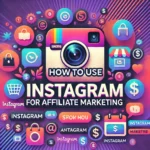Introduction to Instagram’s Business Potential
Instagram has evolved from a simple photo-sharing app to a powerful marketing platform with over 1 billion monthly active users. Businesses leveraging Instagram for marketing can reach a broad and engaged audience, potentially transforming followers into loyal customers. The platform’s unique features like visual appeal, engagement tools, and robust analytics facilitate this potential immensely.
Data from Instagram Business states that 90% of users follow at least one business on Instagram. Moreover, 83% of users report discovering new products and services via the platform. These statistics highlight the immense business potential of Instagram. As more companies recognize the value, competition for attention intensifies, necessitating savvy strategies to convert followers into loyal customers effectively.
Key Statistics demonstrating Instagram’s Business Potential:
- 1 billion+ monthly active users
- 90% of users follow at least one business
- 83% discover new products/services on the platform
- 70% of shopping enthusiasts turn to Instagram for product discovery
One of Instagram’s most beneficial features for businesses is its emphasis on visual content. High-quality images and videos enable brands to convey messages quickly and effectively, making it easier for potential customers to grasp the value proposition. According to a study by Social Media Examiner, visual content is 40 times more likely to get shared on social media than other types of content.
| Feature | Potential Benefit |
|---|---|
| Visual Content | Highly engaging and shareable, increasing brand reach and recognition |
| Instagram Stories | Allows real-time engagement and authentic interaction with followers |
| Shoppable Posts | Simplifies the buying process, directly linking products to e-commerce |
| Analytics Tools | Provides insights into audience behavior and content performance |
Instagram’s business tools, including Stories, Shoppable Posts, and detailed analytics, provide opportunities to engage followers deeply and turn them into loyal customers. Instagram Stories, for example, boast a daily user count of over 500 million. These features, when efficiently utilized, can significantly enhance brand visibility, engagement, and conversions.
In summary, Instagram’s vast user base, emphasis on visual content, and robust business features make it a powerful platform for transforming followers into loyal customers. By understanding and leveraging these potentials, brands can craft tailored strategies to achieve substantial growth and customer loyalty.
Understanding Your Audience and Niche
Understanding your audience and niche is crucial for transforming Instagram followers into loyal customers. A thorough grasp of your audience allows you to tailor your content and engagement strategies effectively, leading to higher conversion rates and increased brand loyalty.
First, conduct comprehensive demographic research to gather data such as age, gender, location, interests, and online behavior of your followers. Tools like Instagram Insights provide vital metrics that can help you understand who your audience is and when they are most active on the platform.
Next, perform a detailed market analysis to identify competitors and current industry trends within your niche. This helps in recognizing gaps in the market that your brand can fill, allowing you to position your content strategically.
Creating detailed buyer personas is another critical step. Buyer personas are semi-fictional representations of your ideal customers based on real data. These profiles help in crafting content that resonates with specific segments of your audience. Factors to include in buyer personas are:
- Demographics: Age, gender, location
- Psychographics: Interests, values, lifestyle
- Behavioral: Buying habits, user behavior, loyalty
- Goals and Challenges: What they hope to achieve, pain points
Social listening and sentiment analysis tools can also provide insights into audience preferences. These tools analyze conversations and mentions around your brand on social media, allowing you to gauge public opinion and sentiment. This qualitative data can inform content strategy and customer service improvements.
Segmentation is another valuable tactic. By dividing your audience into smaller groups based on their characteristics and behaviors, you can deliver more personalized content. For example, offering special promotions to followers who consistently engage with your posts can increase their likelihood of making a purchase.
Lastly, continuously monitor and adapt to the evolving preferences of your audience. Regularly revisit and update your audience analysis, ensuring that your content remains relevant and engaging. Utilize A/B testing to determine which types of posts, captions, and visuals perform best, and adjust your strategy accordingly.
In summary, understanding your audience and niche is a fundamental aspect of transforming Instagram followers into loyal customers. By leveraging demographic research, market analysis, buyer personas, social listening, segmentation, and continuous monitoring, you can create a tailored and effective strategy that fosters brand loyalty.
Crafting Authentic and Value-Driven Content

3. Crafting Authentic and Value-Driven Content
Content is the cornerstone of any successful Instagram marketing strategy. To transform followers into loyal customers, brands must focus on creating authentic and value-driven content that resonates deeply with their audience.
Understanding Your Brand Voice
Every brand has its unique voice that reflects its values, mission, and culture. It’s crucial to maintain a consistent brand voice across all posts to build trust and familiarity. According to a study by Sprout Social, 45% of consumers will unfollow a brand if its content is overly promotional, indicating the importance of balanced, genuine communication.
Developing High-Quality Visuals
Instagram is a visually-driven platform. High-quality images and videos are essential to capture attention and convey professionalism. A HubSpot report highlights that posts with high-quality visuals see 38% more engagement. Invest in good photography, videography, and graphic design to ensure that your content stands out.
Providing Educational and Inspirational Content
Beyond showcasing products, offering educational and inspirational content can provide real value to your followers. This could include how-to guides, behind-the-scenes looks at your business, user tips, and motivational stories. Such content not only engages followers but positions your brand as a knowledgeable and trustworthy leader in your niche.
Embracing Storytelling
Storytelling is a powerful tool in content marketing. Sharing authentic brand stories helps to humanize your business and create emotional connections. According to a report by OneSpot, 92% of consumers want brands to make ads feel like stories. Whether it’s the history of your brand, customer success stories, or employee highlights, storytelling can significantly enhance engagement.
Incorporating Interactive Elements
Interactive content, such as polls, quizzes, and questions, can drive more interaction and feedback. Sprout Social data indicates that posts with interactive features generate up to 70% more engagement compared to static posts. This increased engagement can foster a sense of community and loyalty among your followers.
Consistency and Frequency
Maintaining a consistent posting schedule is important to stay top-of-mind with your followers. Consistency, as per Hootsuite, helps in algorithm optimization and ensuring that your posts appear regularly on your followers’ feeds. However, it’s equally important to balance frequency with quality – never compromise quality for the sake of posting more often.
By focusing on these elements, brands can craft content that not only attracts followers but also builds long-term loyalty, encouraging followers to transition into dedicated customers.
Leveraging Influencer Partnerships for Brand Trust
Leveraging influencer partnerships can be a highly effective strategy for establishing brand trust and transforming Instagram followers into loyal customers. Influencers, thanks to their established credibility and extensive reach within specific niches, can bridge the gap between businesses and target audiences.
Real-world data supports the impact of influencer marketing. According to a study by Mediakix, businesses make an average of $6.50 for every $1 invested in influencer marketing, with the top 13% earning $20 or more. This highlights the potential return on investment when tapping into the power of influencers.
An essential step in leveraging influencer partnerships involves identifying the right influencers. Brands should prioritize authenticity and alignment of values over sheer follower count. A survey by Nielsen found that 92% of consumers trust recommendations from individuals over brands, especially when the influencer genuinely aligns with the brand’s ethos.
To ensure a successful partnership, clear communication and mutual goals must be established. This involves outlining expectations, defining the scope of work, and setting measurable objectives. Transparency is crucial; partnerships should be disclosed to maintain trust with the audience, complying with regulations set by authorities such as the Federal Trade Commission (FTC) for influencer advertising.
One effective approach is to leverage micro-influencers, who typically have between 1,000 to 100,000 followers. Despite their smaller follower base, micro-influencers often exhibit higher engagement rates and more loyal followings. A study by Experticity revealed that micro-influencers have 22.2 times more weekly conversations than the average consumer about recommendations on what to buy.
Consistency and long-term collaborations can also amplify the benefits of influencer partnerships. Rather than opting for one-off promotional posts, brands may find greater success through ongoing partnerships that tell a coherent, long-term story about the brand. This approach fosters deeper relationships between the influencer, the brand, and the audience.
Tracking and analyzing the performance of influencer campaigns is integral. Brands should utilize Instagram’s Analytics tools to monitor metrics such as engagement rates, follower growth, website traffic, and conversion rates. These insights help in refining strategies and maximizing the effectiveness of future influencer collaborations.
In conclusion, influencer partnerships, when executed thoughtfully and strategically, can significantly enhance brand trust and loyalty among Instagram followers. Through authentic alignment, clear communication, and ongoing engagement, brands can effectively convert followers into loyal customers.
Utilizing Instagram Shopping and Shoppable Posts

Instagram Shopping and shoppable posts have drastically changed the landscape for brands looking to convert followers into customers. By providing seamless integration of shopping features within the platform, Instagram has bridged the gap between social engagement and e-commerce.
Implementing Instagram Shopping
Instagram Shopping allows businesses to set up a virtual storefront that users can browse directly from their Instagram profiles. This feature includes product tagging, shoppable posts, and collections, enabling brands to highlight products in a more interactive and visually appealing manner.
To utilize Instagram Shopping effectively:
- Set Up a Shop: To get started, ensure your business meets Instagram’s eligibility requirements, has a Facebook Shop, and has connected your product catalog through Facebook Commerce Manager.
- Tag Products in Posts: Once approved, you can tag products in your organic posts and Stories, effectively turning your Instagram feed into a shoppable experience.
- Create Collections: Group related items into collections within your shop to help customers easily find what they are looking for.
Benefits and Effectiveness of Shoppable Posts
Shoppable posts allow users to discover and purchase products seamlessly without leaving the app. According to Instagram, over 130 million accounts tap on shopping posts to learn more about products every month. This integration not only enhances the user experience but also significantly boosts conversion rates.
Key Elements of Successful Shoppable Posts
Create compelling and clear shoppable posts by focusing on the following elements:
- High-Quality Visuals: Use high-resolution images and videos that showcase the product from different angles and in real-life scenarios.
- Clear Product Descriptions: Provide concise and informative product descriptions that detail features, benefits, and pricing.
- Call-to-Actions: Encourage users to take action with clear CTAs such as “Shop Now” or “Learn More.”
Challenges and Best Practices
While Instagram Shopping offers numerous advantages, there are certain challenges and best practices to consider:
- Catalog Management: Keeping your product catalog updated is essential to avoid discrepancies that may confuse potential customers.
- Consistency: Ensure that the aesthetic of your Instagram shop aligns with your brand’s overall look and feel.
Performance Metrics
Evaluating the performance of Instagram Shopping can guide continuous improvements. Key metrics include:
- Click-Through Rates (CTR): Measure how often users click on product tags.
- Conversion Rates: Track how many clicks result in purchases.
| Metric | Purpose |
|---|---|
| Click-Through Rate (CTR) | Evaluating product interest and engagement. |
| Conversion Rate | Measuring the effectiveness of turning engagement into purchases. |
In conclusion, Instagram Shopping and shoppable posts are powerful tools for transforming followers into loyal customers. By effectively implementing these features, brands can create a seamless shopping experience, driving higher engagement and conversion rates.
Building Community through User-Generated Content
Building a community through user-generated content (UGC) is an effective strategy to transform Instagram followers into loyal customers. When followers actively contribute content related to a brand, it creates a sense of ownership and belonging, fostering deeper connections with the brand.
The Power of User-Generated Content
User-generated content has been shown to significantly enhance brand credibility and engagement. According to a survey by Stackla, 79% of people say UGC highly impacts their purchasing decisions. By integrating UGC into your Instagram strategy, you can leverage this authentic and trustworthy source of content.
Effective Strategies for Encouraging UGC
- Hashtag Campaigns: Create a unique brand hashtag and encourage followers to use it when they post content related to your products.
- Contests and Challenges: Host contests or challenges that require participants to share photos or videos of your products for a chance to win prizes.
- Feature Followers’ Content: Regularly feature user-generated posts on your official Instagram account, giving credit to the original creators.
- Product Reviews and Testimonials: Encourage customers to share their product experiences and review, potentially through videos or photos.
Measuring the Impact of UGC
Tracking the effectiveness of UGC is essential to understand its impact on your brand loyalty and engagement. Key metrics to monitor include:
| Metric | Description |
|---|---|
| Engagement Rate | The percentage of interactions (likes, comments, shares) relative to the total number of followers or views. |
| Reach | The total number of unique users who have seen the user-generated content. |
| Conversion Rate | The percentage of followers who turn into customers after interacting with UGC. |
| Brand Mentions | The frequency with which followers mention your brand in their posts. |
Using these metrics, brands can gauge the effectiveness of UGC campaigns and make necessary adjustments to optimize results.
Leveraging UGC for Long-Term Loyalty
Consistent use of UGC can lead to long-term benefits, such as increased customer retention and brand loyalty. Brands that actively engage with user-generated content show appreciation for their consumers, which can result in a more devoted and enthusiastic customer base.
By integrating UGC into your Instagram strategy, you not only enrich your content repertoire but also deepen the community ties that are crucial for building lasting customer loyalty.
Analyzing Metrics and Refining Strategies
Analyzing metrics is a vital part of refining your Instagram strategies to ensure you are effectively turning followers into loyal customers. Consistently monitoring and assessing the right metrics can offer valuable insights that guide data-driven decisions, ultimately driving better outcomes for your brand.
Instagram provides a variety of metrics within its Insights feature that can help gauge performance. These metrics fall under three categories: activity, content, and audience.
- Activity metrics include profile visits, website clicks, and call-to-action button clicks, indicating how engaged users are with your profile and how often they take desired actions.
- Content metrics encompass likes, comments, saves, shares, reach, and impressions. These metrics showcase the performance of individual posts and overall content strategy.
- Audience metrics give details about your followers’ demographics, including age, gender, location, and activity times. This data is essential for targeting and tailoring content to better suit your audience’s preferences.
Below is a table presenting some critical metrics and their significance:
| Metric | Significance |
|---|---|
| Profile Visits | Indicates interest in your brand by measuring how many times users visit your profile. |
| Website Clicks | Tracks the number of times users click on the website link in your bio, revealing audience interest in learning more or making a purchase. |
| Reach | Measures the unique number of users who have seen your post, showcasing your content’s potential to attract new followers. |
| Engagement Rate | Reflects the level of interaction (likes, comments, shares) your content receives relative to your follower count, indicating content effectiveness. |
Analyzing these metrics over time helps identify trends and patterns in user behavior. With this data, you can refine your content strategy to improve engagement and foster loyalty. For example, if audience metrics reveal that the majority of your followers are active in the evening, posting during these hours could optimize reach and engagement.
It’s also beneficial to conduct A/B testing on different types of posts to understand what resonates best with your audience. By comparing performance data from these tests, you can gain a clearer picture of which content strategies drive the most engagement and conversions.
In conclusion, continuously monitoring and analyzing Instagram metrics is crucial for refining strategies that transform followers into loyal customers. Leveraging this data enables more informed decision-making, ultimately enhancing the effectiveness of your Instagram marketing efforts.
Case Studies of Successful Instagram Brand Loyalty Transformations

Several brands have leveraged Instagram to successfully transform followers into loyal customers. One such example is @glossier, a beauty brand that built a community by engaging directly with its audience. Glossier utilized Instagram Stories and posts to showcase user-generated content, answer questions, and provide beauty tips. This approach fostered a sense of belonging and trust, significantly increasing customer loyalty. According to a study, Glossier’s strong Instagram presence contributed to their 600% revenue growth between July 2015 and April 2017.
@airbnb is another notable example. By sharing high-quality images of unique stays and traveler stories, Airbnb effectively harnessed Instagram’s visual nature. They encouraged followers to share their own experiences using the hashtag #Airbnb. This strategy not only increased engagement but also built a community of loyal users. Airbnb’s Instagram-centric approach played a role in their reported 31% year-over-year growth in nights booked in 2018.
@asos, the fashion retailer, capitalized on Instagram’s shopping features. By integrating shoppable posts, ASOS made it easy for followers to purchase featured items. They also engaged with their audience through challenges and contests, urging followers to share their fashion moments with hashtags like #AsSeenOnMe. This method increased user participation and brand visibility, leading to a 27% increase in sales in the six months to February 2018.
@lushcosmetics stands out with their commitment to ethical practices and strong visual content. Lush’s strategy included showcasing behind-the-scenes processes and customer testimonials. They frequently responded to comments and DMs, providing personalized customer service. This approach strengthened the relationship between the brand and its followers, contributing to Lush’s consistent annual growth and high customer retention rates.
@nike excelled by using a mix of professional content and user-generated posts. By featuring customers’ achievements and personal stories, Nike created an inspirational community. Their Instagram campaigns often align with global events and centered around motivational themes. A report noted that this strategy contributed to Nike maintaining its leading market position, with a 10% revenue growth in fiscal 2019.
These real-world examples highlight the effectiveness of tailored Instagram strategies in fostering brand loyalty. By focusing on community engagement, leveraging Instagram features, and maintaining a consistent and authentic presence, brands can successfully convert followers into dedicated customers.
To gain more followers, use the services that Insfollowpro offers. Don’t get left behind, start today!







